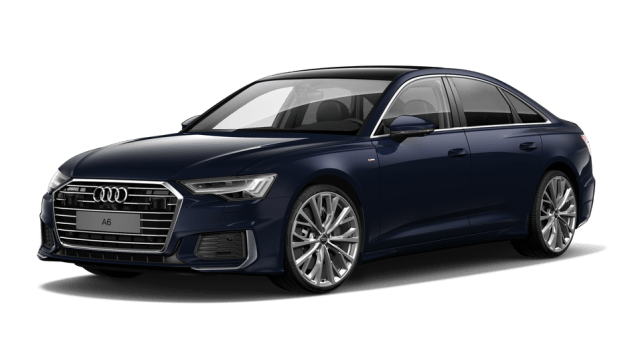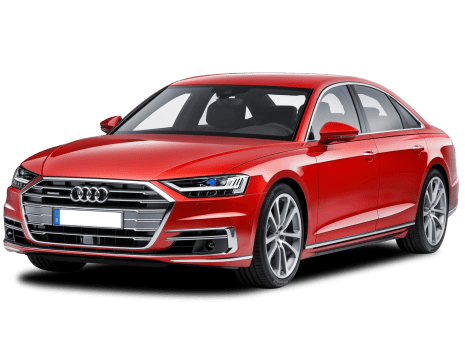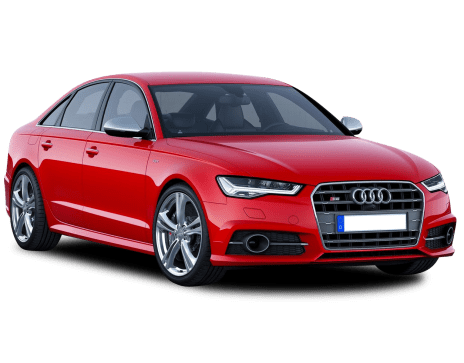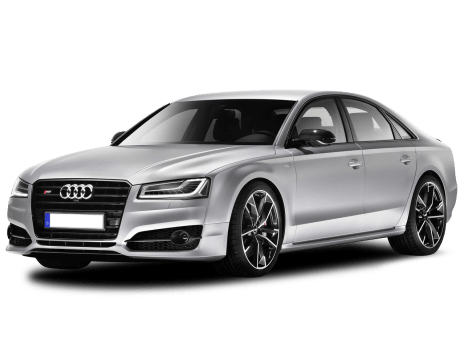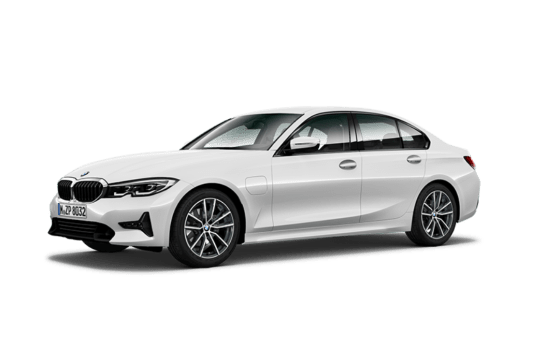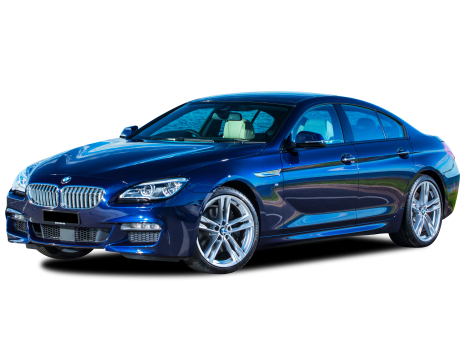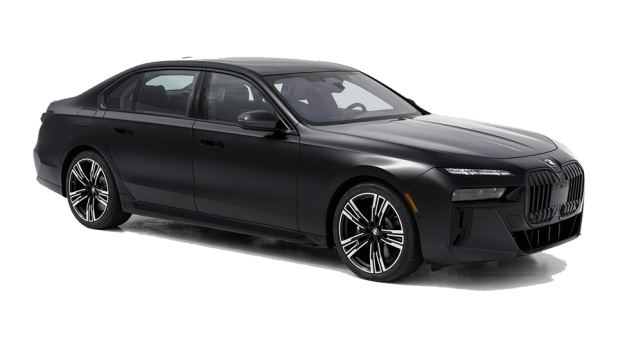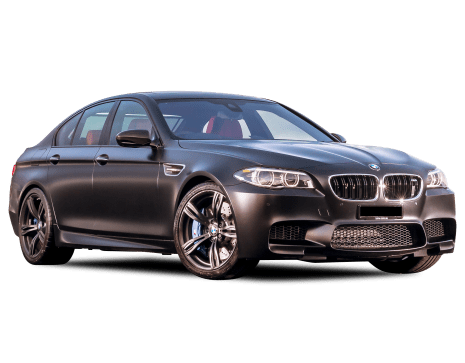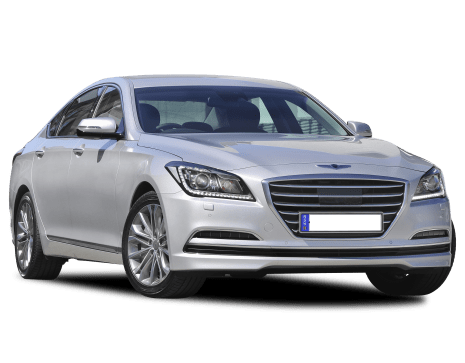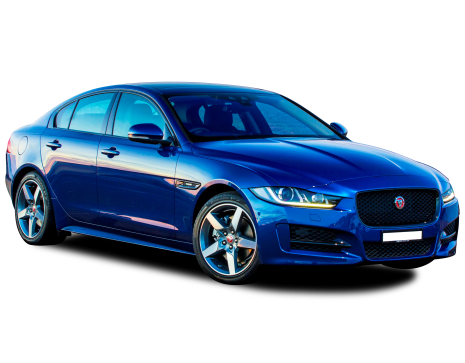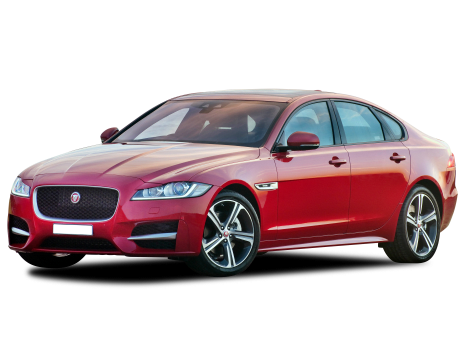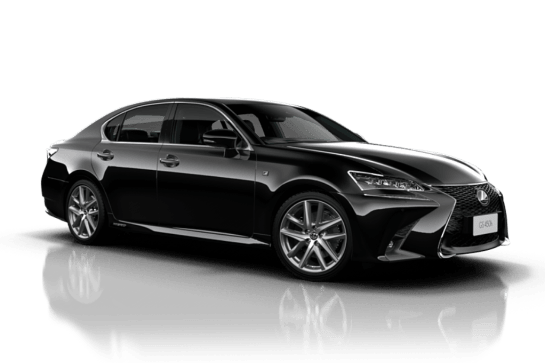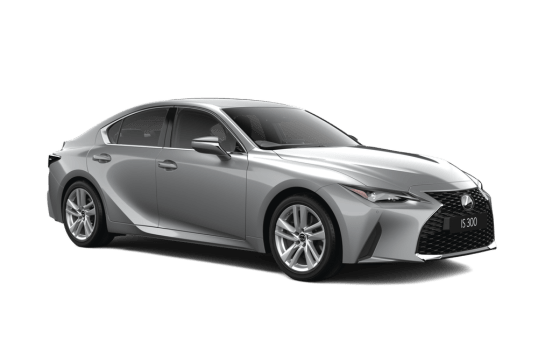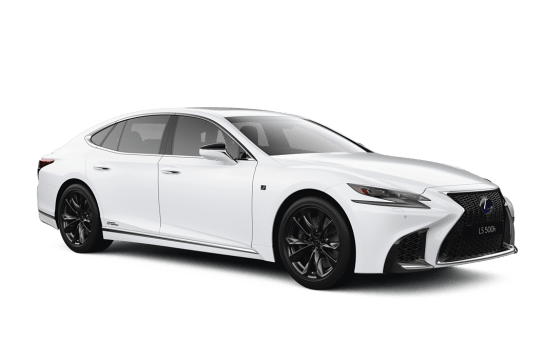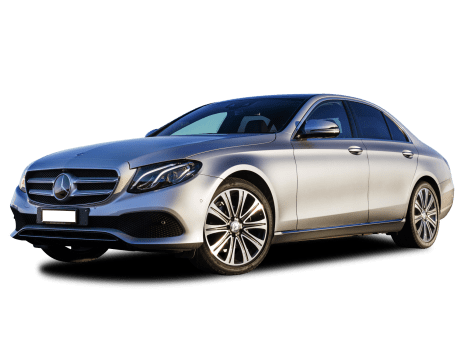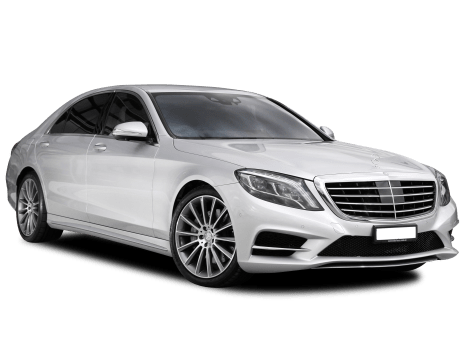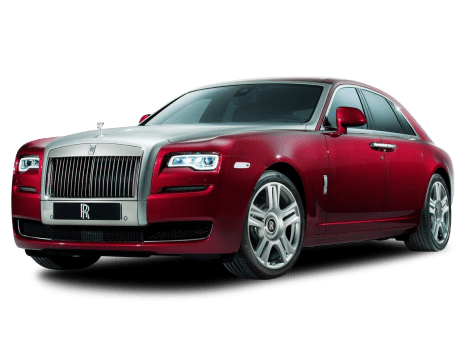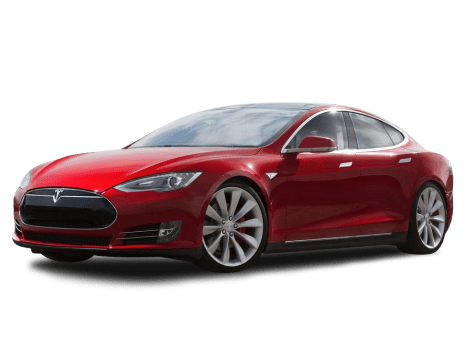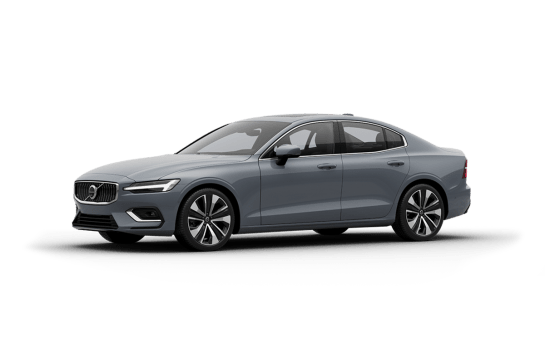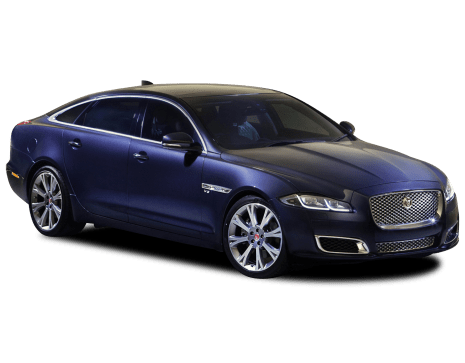
Jaguar XJ VS BMW M5
Jaguar XJ
Likes
- Characterful supercharged V8
- Agile handling with great ride
- Individual looks
Dislikes
- Options pricing
- InControl software a bit ordinary
- Too much in-cabin chrome
BMW M5
Likes
- Effortless power
- Dimensions seem to shrink in sports mode
- RWD setting means much fun
Dislikes
- Hefty price hike
- Design, inside and out, could be more adventurous
- Still no phone mirroring
Summary
Jaguar XJ
As a child, my parents - who aren't car people - would see a Jaguar and point. It didn't matter if it was an XJ, Daimler Double Six or a Mark II, there was a great deal of mystique around these bastions of Britishness. It also didn't matter that these weren't necessarily good cars. The Seventies and Eighties saw the brand slide into a funk while being passed between owners like hot potatoes.
Somehow, the brand survived its brush with Ford's useless Premier Automotive Group strategy which only came good towards the end as Jaguar's management woke up and put in place a change in direction that produced the Ian Callum-designed XF. Riding high on that design, Jaguar then promptly introduced the very pretty Jaguar XJ.
It has been on sale for ages, but with the addition of a few bits and bobs to stay competitive, it's as compelling as ever. Most importantly, the performance-focused R has kept its unique supercharged V8.
| Safety rating | |
|---|---|
| Engine Type | 5.0L |
| Fuel Type | Premium Unleaded Petrol |
| Fuel Efficiency | 11.6L/100km |
| Seating | 5 seats |
BMW M5
Remember back when people were saying the BMW M5 would lose a little something by shifting from its traditional rear-wheel drive set-up to all-wheel drive?
It would drain a little sparkle, maybe. Or some excitement. It would become more predictable, more placid - hell, even boring.
But hindsight is always 20/20, and we know now that switching to AWD has done nothing but allow BMW to funnel even more power into the tarmac, with the German brand upping power outputs and dropping lap times in one fell swoop.
Consider the M5 Competition, then, BMW’s way of delivering the ultimate 'I told you so'. Because it’s not just the most fun, most potent AWD M5 ever - it’s the best M5 period.
| Safety rating | |
|---|---|
| Engine Type | 4.4L turbo |
| Fuel Type | Premium Unleaded Petrol |
| Fuel Efficiency | 10.6L/100km |
| Seating | 5 seats |
Verdict
Jaguar XJ7.5/10
It might be old and facing German competition bursting with advanced technology, but the XJR is still a car you can buy with heart and head. But mostly your heart. It goes like stink, has a much better interior than the Quattroporte and is more interesting than just about anything this big or this grand.
It's also a better car than the Maserati Quattroporte if you want to get on with the driving yourself and is far prettier than the Porsche Panamera. It's a wonderful thing and even more wonderful that Jaguar continues to build it. Long live that supercharged V8 and the XJ is a great home for it.
Is the XJ your cup of Earl Grey or are you more interested in a Maserati espresso (sorry) or a Porsche stein (sorry, again)? Tell us what you think in the comments below.
BMW M57.8/10
The term bigger is better doesn't often apply to performance cars, but it fits the M5 Competition perfectly. Big inside, but small outside when it matters, BMW's new performance flagship might be expensive, but there's no shortage of bang for those bucks.
Is the bruising BMW M5 your high-performance sedan from heaven or hell? Tell us what you think in the comments section below.
Design
Jaguar XJ8/10
The XJ has a marvellously exaggerated length, with a rear overhang redolent of Jag's sporting coupe and roadster pair of the time of its launch, the XK. There's nothing else in the segment like it, with the three Germans - Mercedes' S-Class, Audi's A8 and BMW's 7 Series - having gone all Hugo Boss and and in the latter two's case, almost shrinking violet. The only credible Japanese alternative, the Lexus LS, looks like a Lexused 7 Series. The XJR is a more emotional car, like Maserati's Quattroporte.
The R adds an aggro grille, 20-inch wheels with low-ish profile tyres, a bootlid spoiler, red brake calipers and vents in the bonnet. Bits and pieces get the black gloss treatment and there are V8 and R badges, as well as a rather large leaper on the bootlid. Capping it all off are four exhausts poking out from the bumper and distinctive vertical taillights.
Inside remains largely unchanged. The cabin is big and luxurious, leather-lined and very, very comfortable. The front air vents have to be modelled on the de Havilland Comet's integrated jet engine intakes and, again, the dash design stays away from the horizontal lines of its obvious competition.
There is probably a bit much chrome for my liking, particularly on the centre console and around the rotary dial shifter, which reflects sunlight into your face during the day.
The lovely 'Riva Hoop' - a band that sweeps from door to door across the top of the dash - is a great touch and remains a defining feature in the cabin. The last update brought an Audi-like digital dashboard, including maps, but it's not nearly as slick as the German. The graphics for the dials are good (and quick) but the maps are a bit so-so.
BMW M58/10
Let’s start with the new stuff, shall we? The BMW M5 Competition gets a new colour ('Frozen Dark Silver'), as well as new 20-inch (and lightweight) alloy wheel designs, and the grille, aero-designed wing mirrors and boot lip are finished in high-gloss black. The quad exhaust pipes are a black, too, as is the rear diffuser. Elsewhere outside, though, it’s the more muscular 5 Series of old.
Parked next to the much smaller M2, you quickly realise just how much bulk the M5 is carrying. It stretches 4966mm in length and 1903mm in width, and it looks every centimetre of those dimensions in the metal.
Climb inside, and you’re greeted with the familiar BMW interior design, with a huge centre screen, digital driver’s binnacle and a spaceship-level number of buttons surrounding the shift lever. The M5 Competition also arrives with full leather (seats and dash) trim, with carbon-effect dash inserts and aluminium pedal and foot rest trims.
Is it the most adventurous design treatment, inside or out, that we’ve ever seen? Well, no. But it looks polished and premium outside, and feels plenty comfortable inside.
Practicality
Jaguar XJ7/10
It might be over five metres long, but the Jag's cabin isn't as gigantic as that might suggest - luckily, if you want space, the XJ L has it. The SWB version is roomy enough, though, just not palatial. You can fit five people, but the big transmission tunnel will limit the size of that fifth.
Front and rear passengers have a pair of cupholders each, with rubber bubbles to help hold smaller cups in tight. The front and rear doors have pockets but aren't really for bottles.
Boot space is a reasonable 520 litres, with a space saver spare under the floor.
BMW M57/10
As far as performance cars go, the M5 Competition is a rolling Swiss Army Knife. For one, it’s bloody massive, which pays considerable dividends for passengers.
Up-front, the seats are far enough apart to ensure you’ll be rubbing shoulders with exactly nobody. The centre console Is super wide (all the better for fitting all those buttons), allowing for a sizeable centre storage bin, joined by two cupholders and a second storage bin in front of the shifter which is also home to your USB, power and 'aux-in' connections.
In the back, there’s business-class levels of leg and headroom, and you can even fit another whole adult in the centre seat if you’re so inclined. The pull-down seat divider is home to two extra cupholders, sitting in front of a thick armrest, and the rear air vents get their own temperature controls. There’s an ISOFIX attachment point in each window seat, too. Pop the capacious boot and you’ll find 530 litres of storage space.
Price and features
Jaguar XJ7/10
As is expected at this level, Jaguar was not mucking about with price or specification - the XJR starts at a mildly terrifying $299,995, which is very close to the rather more tranquil Autobiography long-wheelbase relax-o-mobile.
Standard are 20-inch alloys, a 20-speaker stereo, power everything with three memory positions, four-zone climate control, keyless entry and start, front and rear parking sensors, heated and cooled front and rear seats, sat nav, LED headlights and DRLs, leather everywhere, auto wipers and (LED) headlights, electric boot lid, heated steering wheel and a space saver spare.
The Meridian-branded stereo is an absolute cracker, powered by the improved but still laggy 'InControl Pro' system. Oddly, it's all crammed into an 8.0-inch touchscreen when there is seemingly room for the larger (and better-performing) 10.0-inch screen. The software is far superior than the version that preceded the last update, but the screen is hard to use, as targets are placed right in the corners and are hard to hit.
Apple CarPlay and Android Auto are also absent, and the sat nav is still fairly dopey.
A long list of options are available, some of which should probably be included in the big sticker price - DAB+ ($620), premium paint is a splutter-worthy $2060 (although, to be fair, the vast majority of the 19 colours are free), adaptive cruise with queue assist ($2200), adaptive headlights a further $2620 and 'Parking Assist', which adds side sensors and a front camera, a further $2780. Reverse cross traffic alert, blind spot monitoring and forward collision warning cost yet another $1460. Ouch.
BMW M57/10
Parking the M5 Competition on your driveway will require a $229,000 investment. That's not chump change, and a considerable jump over the regular M5, which arrived (in launch-edition guise) wearing a $199,529 price tag.
Outside, that money buys you new and lightweight 20-inch alloys, LED headlights with auto-dipping and active cornering, keyless entry and a four-tipped sports exhaust. Inside, expect a 'full leather' interior (seats, dash and door inserts),a nav-equipped screen which pairs with a 16-speaker stereo (but Apple CarPlay is a cost option) and dual-zone climate control.
Performance wise, M-designed variable dampers, a lightweight carbon-composite roof and a M sports exhaust all join the standard features list. Still, $30,000 is fair jump over the standard (and well equipped) M5. But if money is no object, you'll be buying plenty of fun.
Under the bonnet
Jaguar XJ9/10
Jaguar's lovely 5.0-litre V8 with supercharger continues under the XJ's long and shapely bonnet, delivering a walloping 404kW and a tyre-shredding 680Nm. The sprint to 100km/h for all 1875kg of XJR is completed in an impressive 4.6 seconds, which was very competitive at the car's launch in 2009.
Power reaches the rear wheels via ZF's eight-speed automatic and you can control it with the tacky plastic paddles on the steering wheel. Oh, and it has stop-start.
BMW M59/10
Yes, our all-electric future feels inevitable. And yes, there’s much fun and performance to be had from battery-powered EVs. But you can’t help but hope that future is a Star Wars style far, far away when you get acquainted with the BMW M5 Competition’s monstrous twin-turbo V8.
It’s good for a wondrous 460kW (up 19kW on the regular M5) and 750Nm. Both of which are big numbers, which are fed to all four wheels via an eight-speed 'M Steptronic' automatic. Happily, you can, at the push of some buttons, make the M5 a rear-driver again. It’s slower, but damn if it ain’t much more fun.
As a result, the performance numbers need to be seen (or better yet; felt) to be believed. The near-two-tonne M5 Competition will blaze from 0-100km/h in 3.3secs, 0-200km/h in 10.8secs, and push on to a limited top speed of 250km/h (or 305km/h, provided you do some BMW driver training).
Efficiency
Jaguar XJ6/10
The combined cycle figure for the V8 is listed at 11.1L/100km but fully expect to see the 16.1L/100km we got, especially as you try and fail to tyre of the monstrous power delivery and lovely (if muted) V8 roar.
Luckily, even if you're belting it, the 82 litre tank is a generous size and you'll cover a fair amount of ground.
BMW M57/10
Well, BMW tells us you’ll return 10.7-10.8 litres per hundred kilometres on the combined cycle. But we would suggest that’s unlikely, unless you have Miss Daisy lounging in the back seat. Drive it like you definitely will drive it, and you can expect to pay for that privilege at the pump.
Emissions are a claimed 243-246g/km of CO2, and the M5 Competition’s 68-litre tank will demand a premium unleaded petrol.
Driving
Jaguar XJ8/10
Indecently quick, surprisingly agile and heaps of fun. While the first descriptor applies purely because of its size, the next two shouldn't when you're in command of 5.13 metres of motor vehicle. As with the Audi and now the 7, the Jag has a lot of aluminium to help keep the kilos off and good gracious, it has worked.
The R is based around the short wheelbase version of the XJ for perhaps obvious reasons. Even so, it appears to be the shorter-again XF's because this thing turns in like a demon. No, it won't stay with the dearly-departed XF-R but it does a mighty fine impression of one, just with a better ride quality.
Rear seat passengers should be prepared to feel a lot of wheelslip, especially when in Dynamic mode, as even the fat Pirelli P-Zero's struggle for purchase when the right foot hits the carpet. The V8 rumbles rather than bellows, but the rears cheerfully spin up until the computers and active differential rein things in. Traction control off and you've got a proper tyre-smoker if you're not playing by the rules. Jag's engineers are clearly hooligans at heart.
As always, ZF's eight-speed transmission does an incredible job of marshalling the horses in a rearward direction and when you're not after a bit of sound and light, have achieved a tremendous amount with the damping. When in normal mode, the car glides along, so much so that the lady of the house wasn't so sure it was a sporting sedan.
Once she was apprised of dynamic mode (you have to cycle the button through winter mode first, for some reason), her only complaint was that it was too long and the steering wheel too big for this type of car. I was persuaded of the latter, especially after stepping out of an Audi S3 which has a tiny wheel. Long story short, the XJR is now 'her' car (to be more accurate, the XFR is, but that hasn't arrived yet, so...), as it felt smaller than it was when not parking and she's a sucker for a torquey V8.
BMW M59/10
Things this large simply shouldn’t be this potent. Like John Goodman suddenly toppling Usain Bolt at the Olympics, the BMW M5 Competition is bulk-defyingly good at the fast stuff.
The secret is its ability to hide those sprawling dimensions on a race circuit or twisting road. BMW’s engineers have poured plenty of work into stiffening the chassis of the M5 Competition, from new anti-roll mounts to additional under-bonnet bracing, to make the brand’s biggest performance sedan feel more lithe and responsive when pushed.
And while its size never vanishes completely - and you find yourself praying you don’t encounter oncoming traffic on skinnier roads - engaging the Competition’s sportiest settings unlocks a Copperfield-level vanishing act.
The engine helps too, of course, pushing the M5 along with staggering ease, even when you’re pottering at suburban speeds. But really flatten your foot and the big V8 will force you to reassess your knowledge of physics. It’s really very fast, the Competition, the power flowing uninterrupted to the tyres, the engine still very willing to deliver more oomph long after your courage has jumped ship.
The steering, direct though it is, lacks some natural feel, but you are always left with the impression that the Competition is going to go where you point it.
More fun stuff? Well, you can switch the traction control to a half-off setting, allowing for some smoking, drifting heroics before it drags you back into line. BMW calls it M mode, and it’s designed to make a hero of even the most ham-fisted of pilots, myself included. The braver still can deactivate traction control all together which, combined with rear-wheel-drive mode, turns the M5 Competition into the biggest and possibly most expensive drift car of all time .
Away from the track, though, the Competition version of the M5 is almost as good as transforming into a comfortable everyday commuter as its less hairy siblings. The adaptive suspension can be softened, and the steering lightened, to make toppling traffic a doddle.
The keen-eyed among you might well have noticed we’re yet to touch on any major downsides of the drive experience. And you'd be correct.
Safety
Jaguar XJ7/10
The whole XJ range has six airbags, ABS, stability and traction controls, emergency brake assist, reversing camera, three top tethers and two ISOFIX points. The XJ doesn't have an ANCAP safety rating.
BMW M58/10
BMW is yet to confirm full specifications for the M5 Competition, but you can expect the safety offering to largely mirror that of the regular M5. And while the performance variant has not been crash tested, the regular 5 Series was awarded the maximum five-star safety rating.
Expect dual front, side and curtain airbags, as well as a knee bag for the driver, and a parking camera. You'll also find AEB, active cruise (which allows for brief spells of autonomy), thanks to its lane-keep assist.
Ownership
Jaguar XJ8/10
Jaguar offers a three year/unlimited kilometre warranty and roadside assist for the same period.
Like the F-Type, XJ owners benefit from three years/100,000km free servicing.
BMW M57/10
The ownership package is yet to be confirmed, the M5 Competition will be covered by BMW’s three-year/unlimited kilometre warranty.
Service intervals are condition, rather than time or distance, based, so the car will tell you when servicing is required.




